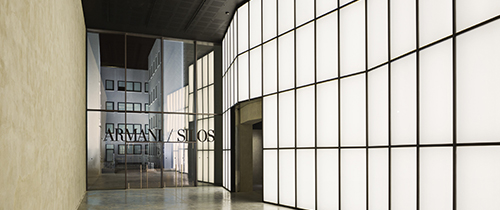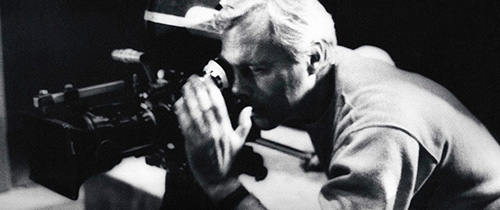- PLAN YOUR VISIT
- EXHIBITIONS
- INITIATIVES
the maximum number of available tickets for this timeslot has been reached
The maximum quantity must be equal to or less than 4
THE EXHIBITION
The story, told in the present, of almost thirty years of uninterrupted artistic dialogue between Giorgio Armani and Aldo Fallai, explores the boundaries of a unique collaboration that defined the very essence of an aesthetic that has made its way into the collective imagination.
THE EXHIBITION
The story, told in the present, of almost thirty years of uninterrupted artistic dialogue between Giorgio Armani and Aldo Fallai, explores the boundaries of a unique collaboration that defined the very essence of an aesthetic that has made its way into the collective imagination.
THE PHOTOGRAPHER
Born in Florence in 1943, Aldo Fallai lives and works in his native city and in Milan. With a diploma from the Istituto d’Arte in Florence, where he later teaches, opening a graphic design studio with photographer Mario Strippini and begins to approach photography himself. In the mid 1970s he meets Giorgio Armani, who is making his debut as a designer at the beginning of the global affirmation of Made in Italy, to which Fallai’s photography contributes significantly. His first assignment from Armani marks the start of a collaboration that continues for almost thirty years.
Fallai makes his name as a fashion photographer with a disenchanted and unconventional style. Having achieved international fame, Fallai also works for other labels and his reportages appear regularly in the Italian and international fashion titles. In the 1980s he begins to address the icons of the history of art and the portrait genre, which he links to fashion in a highly personal synthesis. Tuscan Mannerism, Caravaggio, the Pre-Raphaelites and the exoticism of the French orientalists have been identified by critics as Fallai’s artistic inspirations. He has published the photography books: Almost One Year (1993), In Fabbrica (2007) and From Giorgio Armani to Renaissance (2014).
THE PHOTOGRAPHER
Born in Florence in 1943, Aldo Fallai lives and works in his native city and in Milan. With a diploma from the Istituto d’Arte in Florence, where he later teaches, opening a graphic design studio with photographer Mario Strippini and begins to approach photography himself. In the mid 1970s he meets Giorgio Armani, who is making his debut as a designer at the beginning of the global affirmation of Made in Italy, to which Fallai’s photography contributes significantly. His first assignment from Armani marks the start of a collaboration that continues for almost thirty years.
Fallai makes his name as a fashion photographer with a disenchanted and unconventional style. Having achieved international fame, Fallai also works for other labels and his reportages appear regularly in the Italian and international fashion titles. In the 1980s he begins to address the icons of the history of art and the portrait genre, which he links to fashion in a highly personal synthesis. Tuscan Mannerism, Caravaggio, the Pre-Raphaelites and the exoticism of the French orientalists have been identified by critics as Fallai’s artistic inspirations. He has published the photography books: Almost One Year (1993), In Fabbrica (2007) and From Giorgio Armani to Renaissance (2014).
“Working with Aldo allowed me from the very beginning to transform the vision I had in my mind into real images: to communicate that my clothes were not just made in a certain way with certain colours and materials, but that they represented a way of life. Because style, for me, is a total form of expression. Together, with a constant fluid and concrete dialogue, we created scenes of life, evoked atmospheres and sketched portraits full of character. Today, looking back at everything we did, I myself am struck by the power that these shots still emanate, and by Aldo’s great ability to capture the nuances of personality.” – Giorgio Armani
“Working with Aldo allowed me from the very beginning to transform the vision I had in my mind into real images: to communicate that my clothes were not just made in a certain way with certain colours and materials, but that they represented a way of life. Because style, for me, is a total form of expression. Together, with a constant fluid and concrete dialogue, we created scenes of life, evoked atmospheres and sketched portraits full of character. Today, looking back at everything we did, I myself am struck by the power that these shots still emanate, and by Aldo’s great ability to capture the nuances of personality.” – Giorgio Armani
THE PHOTOS
The narrative pathway develops over two floors and brings together approximately two hundred and fifty shots, which either appeared in magazines or were transformed into billboards with huge media impact.
The exhibition juxtaposes images produced for different lines: the photo with the tiger cub, taken in Palermo when the troupe took refuge at the Togni circus one rainy day; the career woman, impersonated by Antonia Dell’Atte, looking directly ahead towards a bright future in the middle of the crowd on Via Durini by the Armani office. And then there’s the Venetian Lagoon, evoked in studio, and the statues of the Foro Italico translated into a play of sharp, graphic shadows. The photographs are at once familiar and surprising, taken with inventiveness and intelligence.
THE PHOTOS
The narrative pathway develops over two floors and brings together approximately two hundred and fifty shots, which either appeared in magazines or were transformed into billboards with huge media impact.
The exhibition juxtaposes images produced for different lines: the photo with the tiger cub, taken in Palermo when the troupe took refuge at the Togni circus one rainy day; the career woman, impersonated by Antonia Dell’Atte, looking directly ahead towards a bright future in the middle of the crowd on Via Durini by the Armani office. And then there’s the Venetian Lagoon, evoked in studio, and the statues of the Foro Italico translated into a play of sharp, graphic shadows. The photographs are at once familiar and surprising, taken with inventiveness and intelligence.
“My work with Giorgio was the result of a natural, continuous dialogue and great trust on his part. Both of us were interested in highlighting an aspect of style linked to character and personality and this translated into images that appear just as relevant today as they did yesterday: a quality highlighted by the layout of the exhibition, which does not follow a chronological sequence. I have vivid memories of our 30-year collaboration. Production was always agile and streamlined: we achieved the results with little means and no special effects. This, I think, appealed to the public.” – Aldo Fallai
“My work with Giorgio was the result of a natural, continuous dialogue and great trust on his part. Both of us were interested in highlighting an aspect of style linked to character and personality and this translated into images that appear just as relevant today as they did yesterday: a quality highlighted by the layout of the exhibition, which does not follow a chronological sequence. I have vivid memories of our 30-year collaboration. Production was always agile and streamlined: we achieved the results with little means and no special effects. This, I think, appealed to the public.” – Aldo Fallai
THE ROOMS
THE ROOMS
Sign up to learn about Armani/Silos and get a first look at upcoming events.
Your subscription has been confirmed
Temporarily closed
Starting from May 21st
MON TUE – closed
WED FRI SUN – from 11 am to 7 pm
Last admission 6 pmTHU SAT – from 11 am to 9 pm
Last admission 8 pm
via Bergognone, 40 Milan, Italy
-
(number active Mon – Sat from 9:00am to 6:30pm, excluding holidays)



